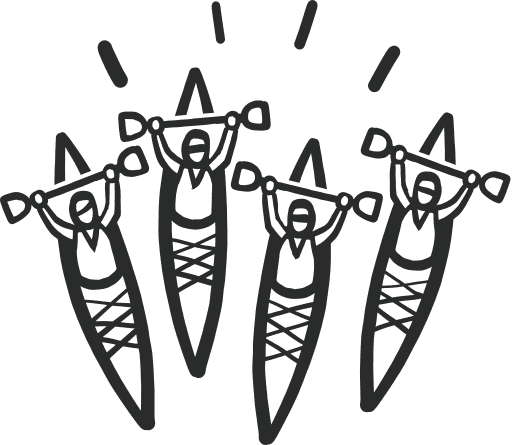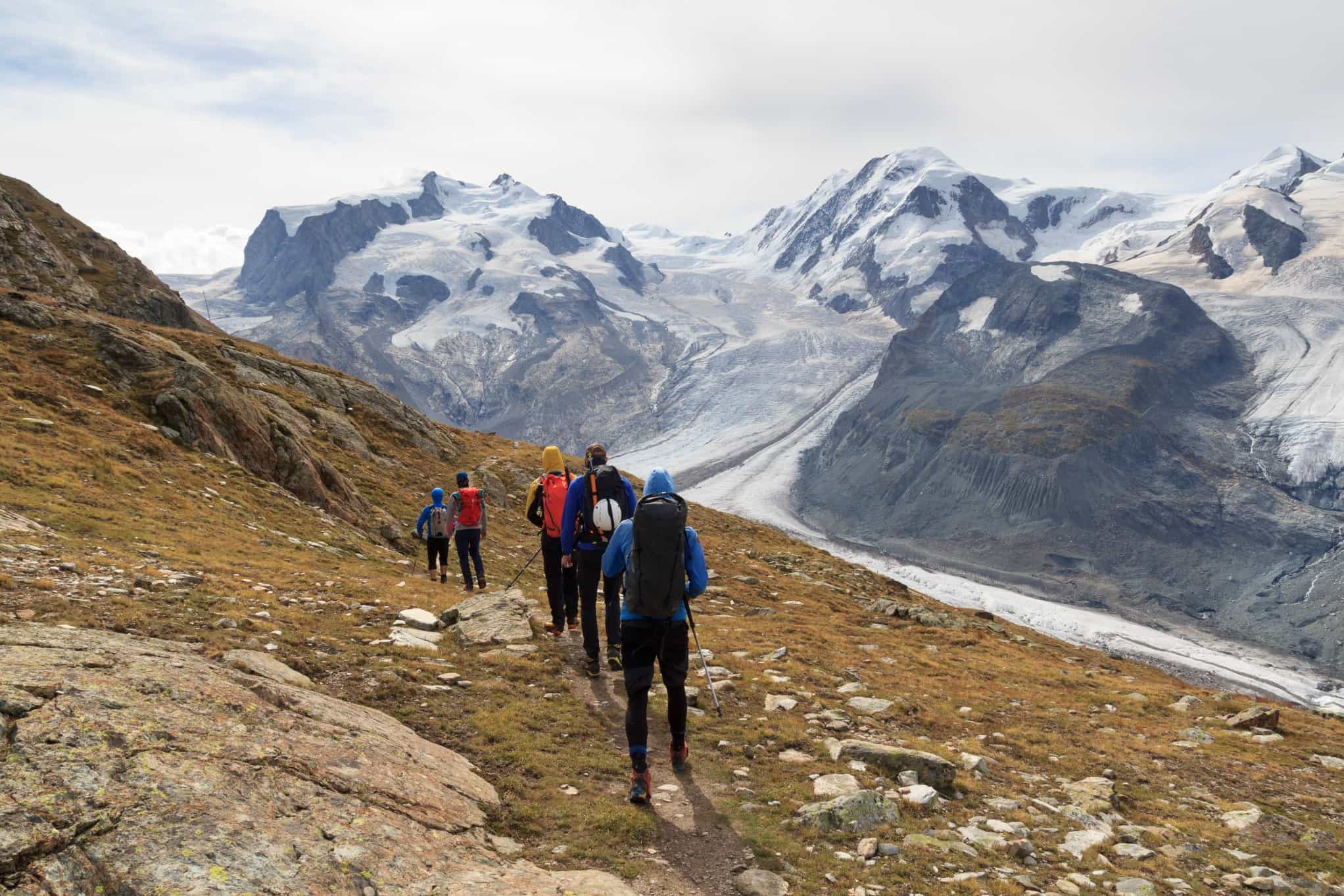
Trek the Tour del Monte Rosa
A lesser-known epic through a trekker's paradise in the Italian and Swiss Alps, in the shadow of the Matterhorn
What's Included?
Activities & Certified Guides
All itinerary activities with expert, local, English-speaking mountain guides plus an extra guide for the glacier crossingMountain hut & Pension
6 nights in mountain refugesMeals
6 breakfasts, 6 lunches, 6 dinnersEquipment
Safety gear for crossing the Monte Rosa glacier. Pillows and blankets are provided in the refuges.Small Like-minded Groups
Solo-friendly by design, join our small n’ sociable groups of up to 12 like-minded, active and outdoorsy people…
…
What's it like?

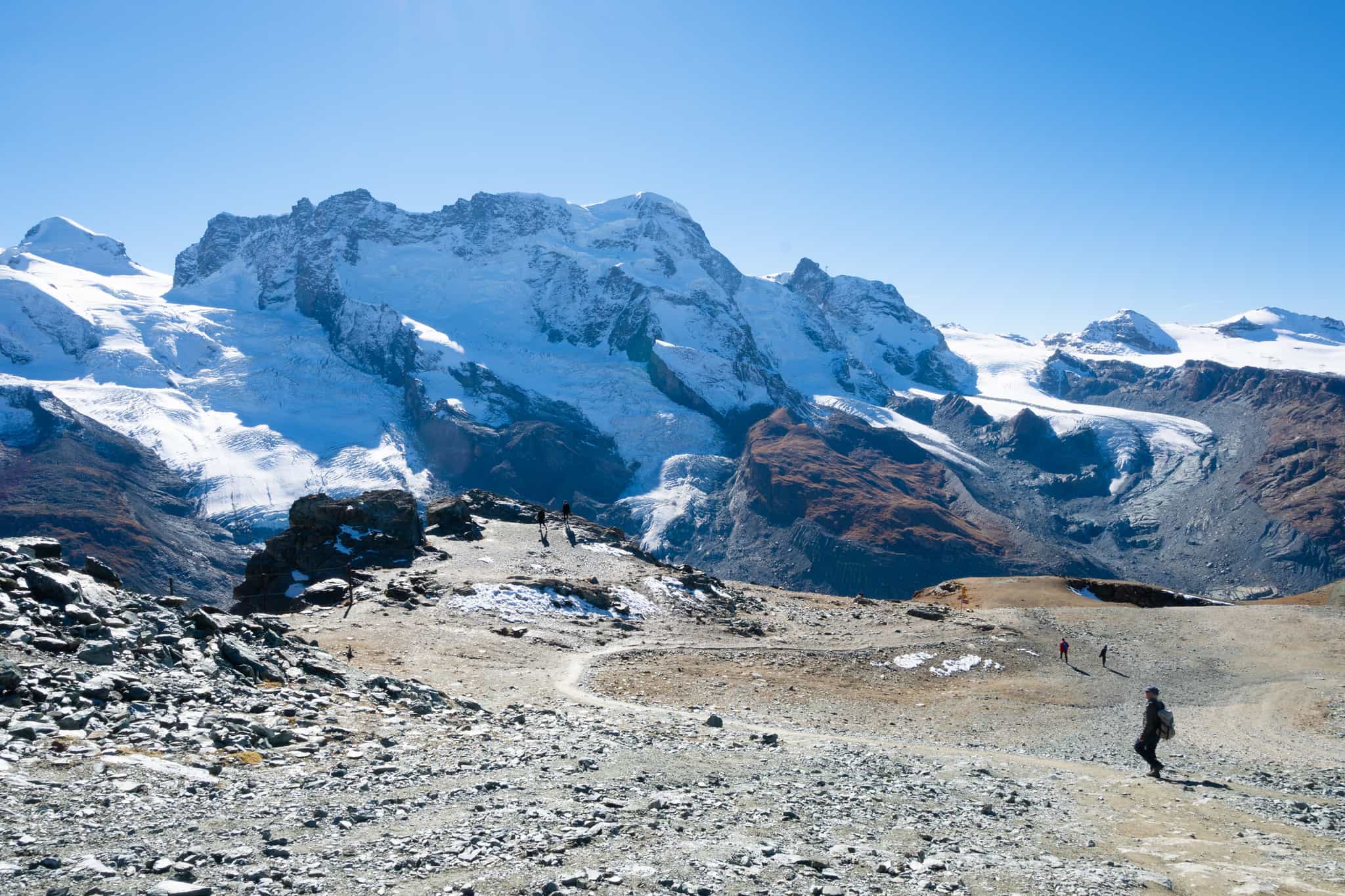
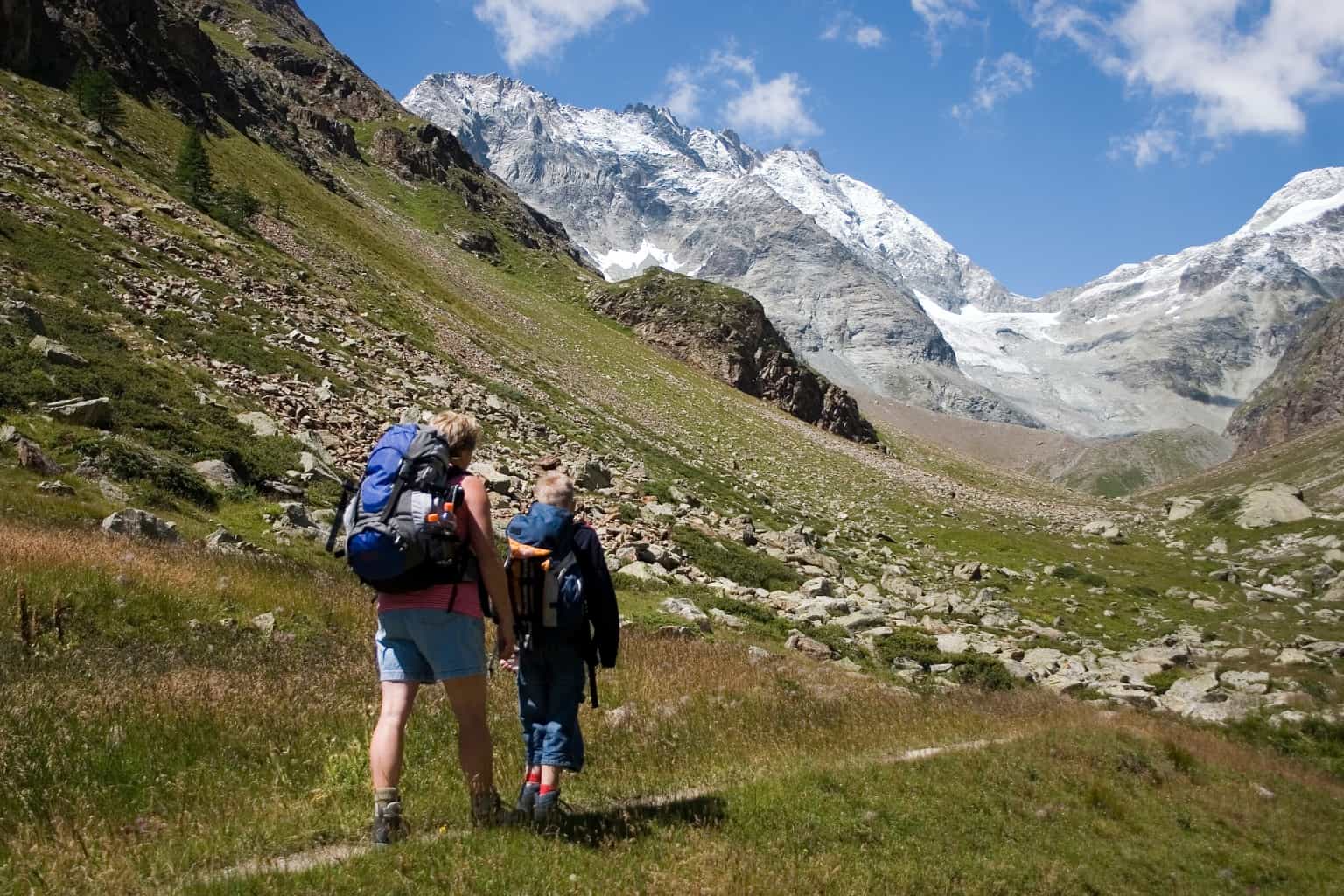
Explore an overlooked and quieter corner of the Alps, a hiker's dream of steep, forested valleys, high meadows, snow-capped peaks and giant glaciers
Traverse the Monte Rosa massif beneath some of Europe's highest peaks: The Dom (4545m), Weisshorn (4596m) and iconic Matterhorn (4478m)
Navigate the incredible Monte Rosa glacier, crunching through glacial moraine as you slowly descend towards the Swiss Alpine resort of Zermatt
Bunk down and fuel up at remote, high altitude refuges known for dishing up the best pasta in the Alps
Key Information
Day 1
Rendezvous in the Swiss Alps
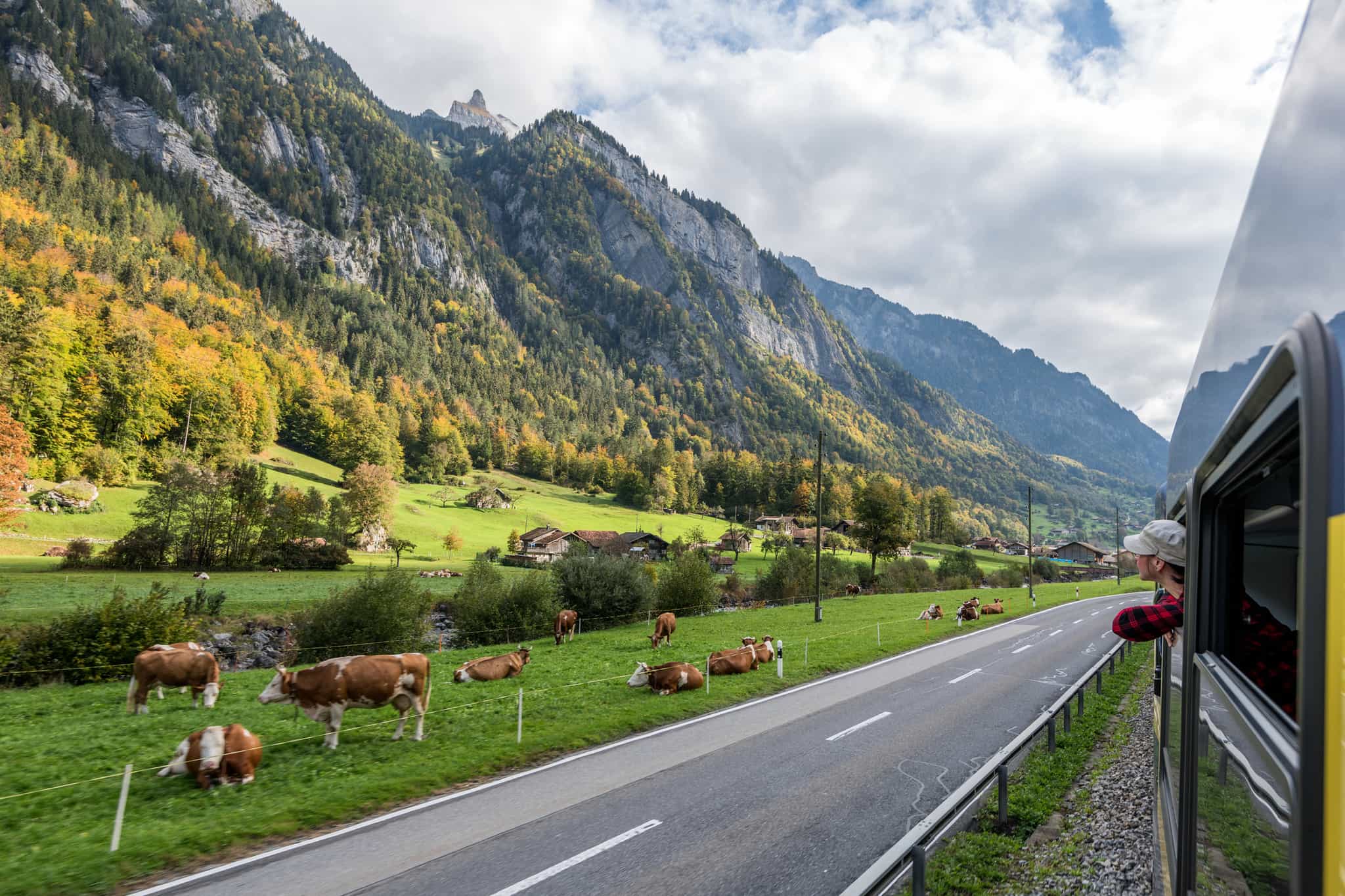
Touch down in Geneva and hop on the scenic train journey along the shores of Lake Geneva to the Alps. Get off at Visp, where your guide will be waiting to escort the group onto the local bus to the Alpine village of Saas Grund. Grab dinner with your guide and fellow adventurers before charging your batteries with a good night's sleep in your cosy pension accommodation. Your trek starts in the morning.
Day 2
Saas Grund to Macugnaga
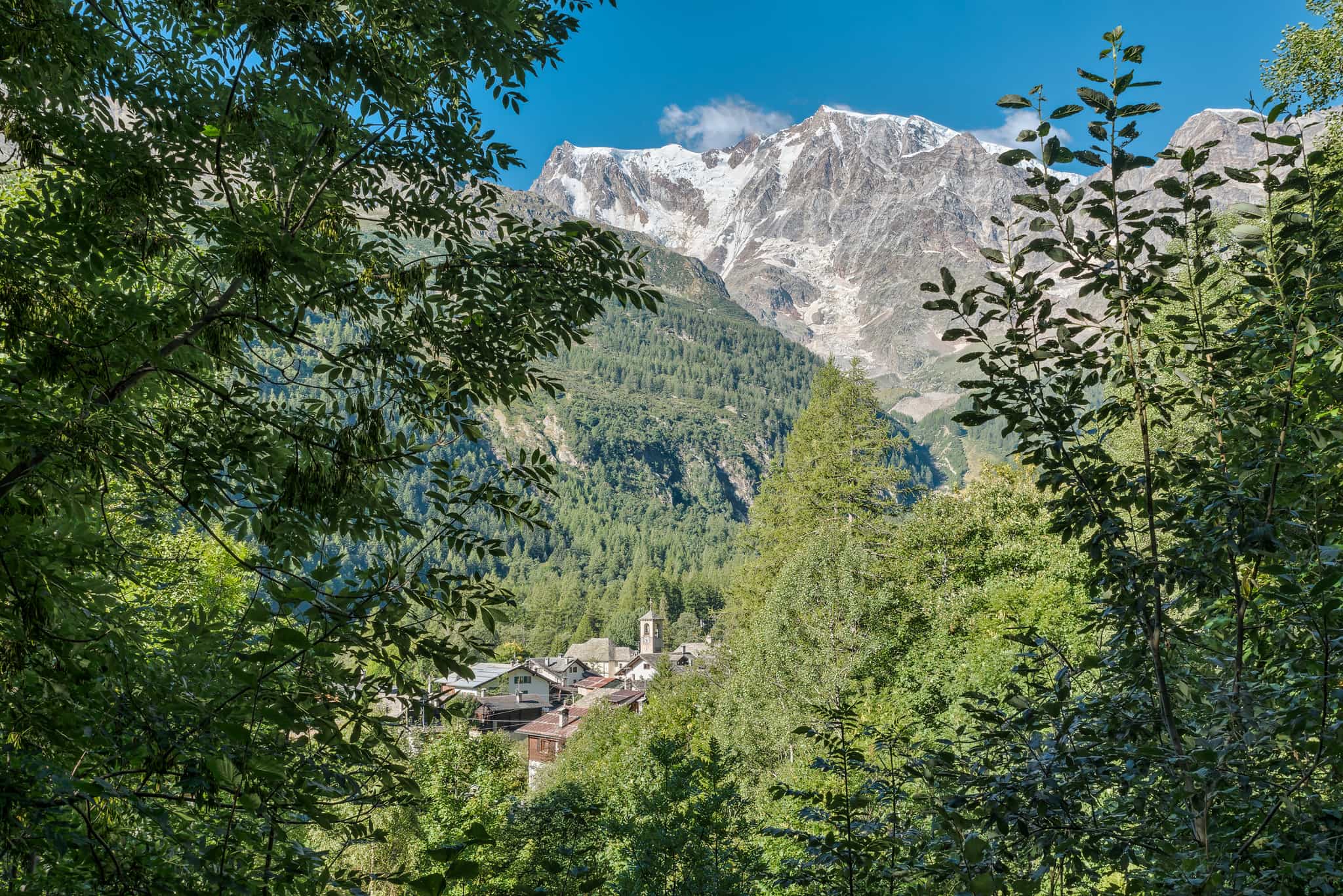
Hiking
Wake up to glorious Alpine views, tuck into breakfast and hop on a 10-minute bus ride to the trailhead at Mattmark. The Tour del Monte Rosa (TMR for short) kicks off with a traverse around the lake at Mattmark before ascending to the Monte Moro Pass to cross the border into Italy. From the pass you'll be greeted by the awesome sight of Monte Rosa – all 4,634 metres of her. Trek on past the Rifugio Citta di Malante and take an initially steep descent through boulder fields and granite slabs, followed by a long steady downhill through a forest which leads the way to the village of Macugnaga where your first refuge awaits. You've earned your plate of pasta after a full-on first day – the Italian refuges have a reputation for offering the best spaghetti in the Alps.
*If you'd prefer a lighter first day of trekking to save your legs for the challenges to come, you can cut out a large chunk of the descent today by taking a cable car at Monte Moro pass down to Macugnaga.
Day 3
Macugnaga to Alagna Valsesia
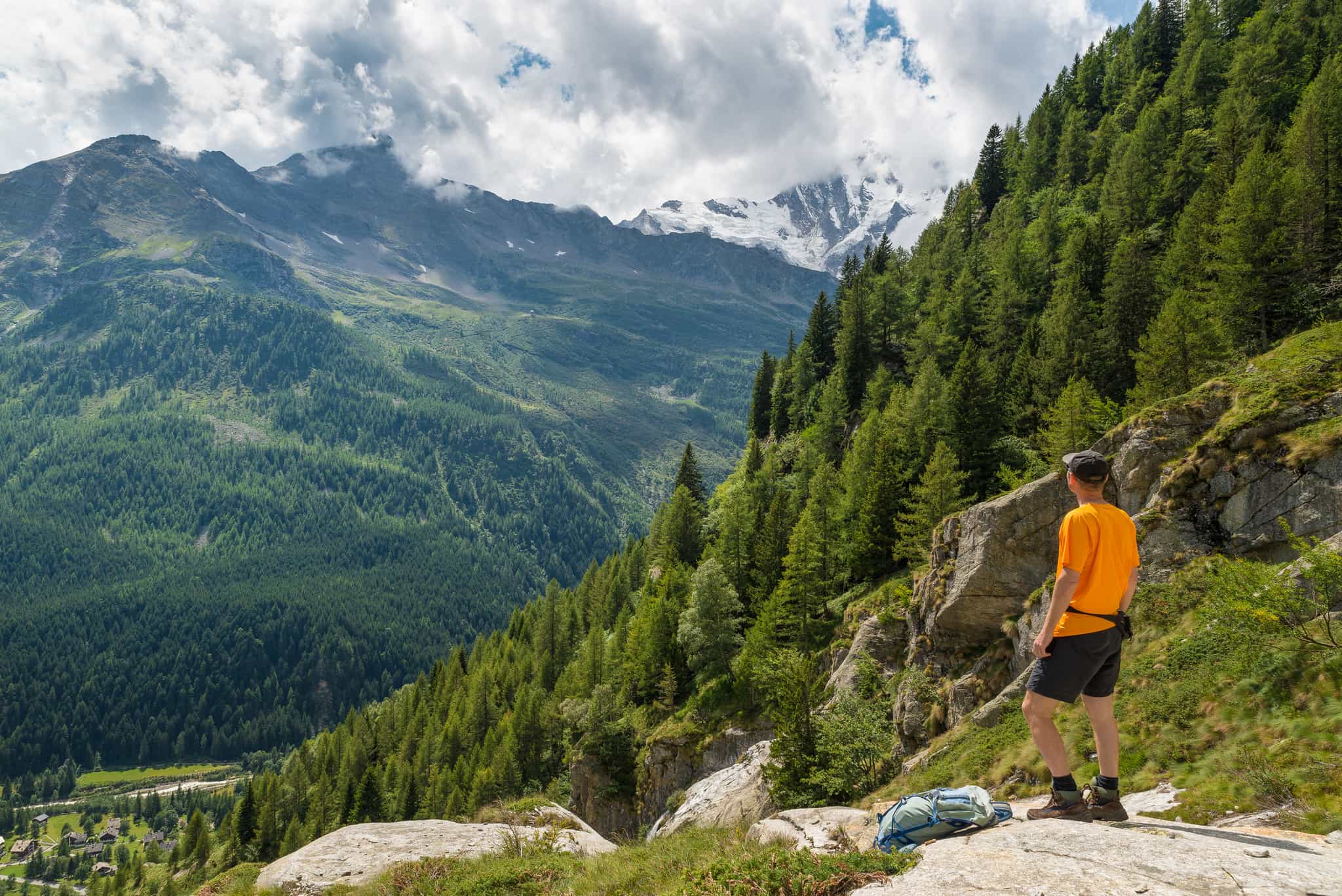
Hiking
You have 22 kilometers to cover today, which is the longest stretch on the TMR to get from one refuge to the next. Begin your journey by heading straight from Macugnaga to the Turlo pass (2738m) via the Quaraxxa Valley. This is one of the longest and toughest climbs on the TMR. The start is relatively easy, following a river through a series of beautiful basins before embarking on the arduous ascent to Colle del Turlo. You'll need to navigate boulders and glaciated slabs along the way. As you ascend, Monte Rosa itself disappears from view, replaced by the imposing Weissmies mountain, which overlooks the Saas Valley. After reaching the col, there's another long descent awaiting you, leading to your overnight stop at Rifugio Pastore. This refuge is situated in a stunning spot nestled within Alpine grassland beneath the peaks of Punta Gnifetti, Parrotspitze, and Piramide Vincent in the Monte Rosa massif.
Day 4
Alagna Valsesia to Gressoney Valley
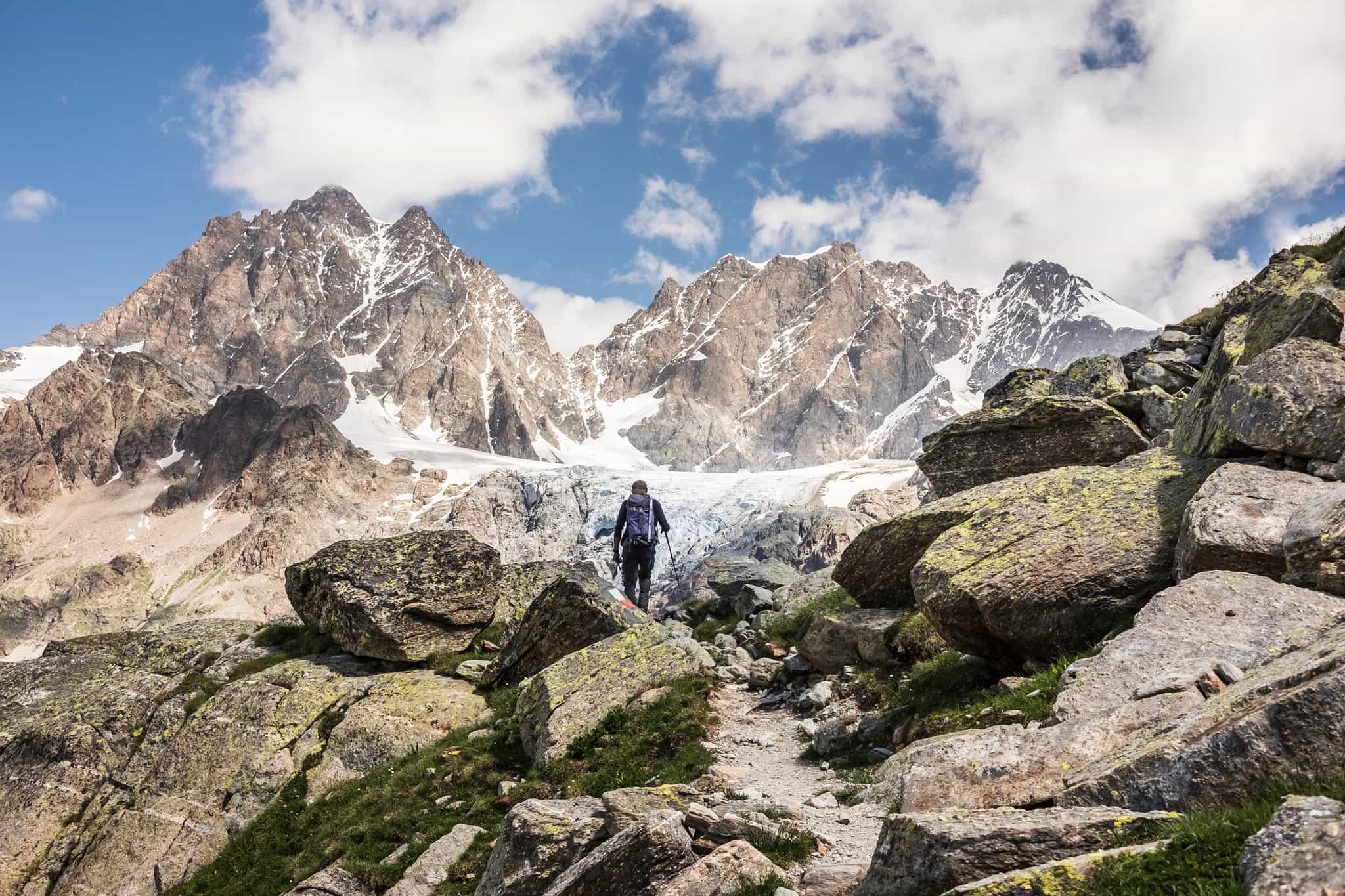
Hiking
Wake up, watch the sun hit the high peaks of the range while you tuck into breakfast at the refuge, and then hop on a quick bus ride to Alagna. The trek takes on a different feel today with an ascent through the enchanting hamlets and agricultural communities of the Otro Valley, finally reaching the mountain pass of Passo Foric at 2432m. The trail winds further up, culminating at today's pinnacle, the awe-inspiring Col d'Olen, soaring to an impressive 2881m. It's taken a whopping 1800m of elevation gain to get here. After a short descent, you’ll reach the cosy Rifugio Gabiet for tonight's well-earned dinner and bed.
Day 5
Gressoney to the Ayas Valley
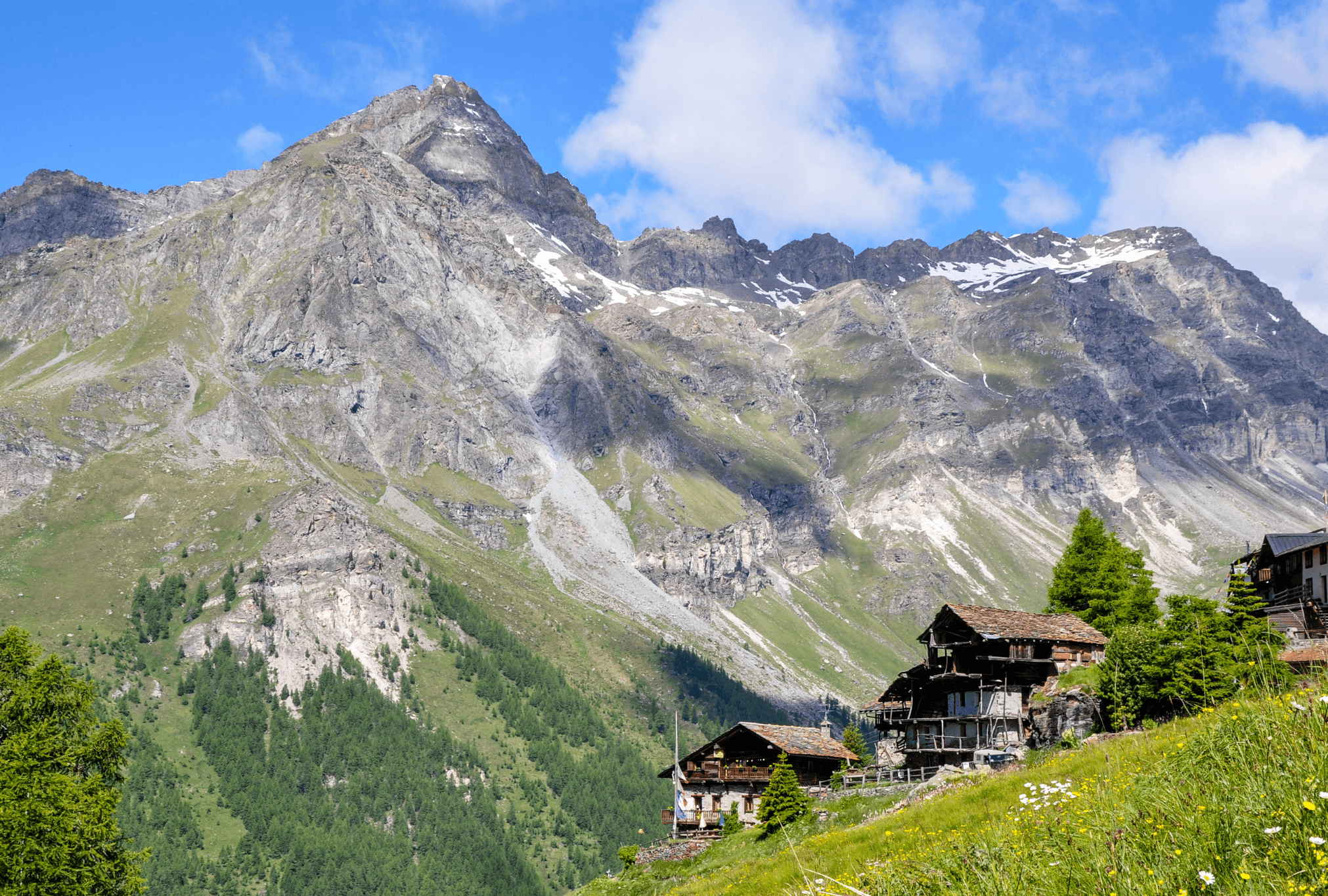
Hiking
After yesterday's big uphill push, you'll kick off today with a gentle start on a delightful trail that winds through lush forests and picturesque meadows, gradually leading to the charming village of Gressoney Stafal. Grab a welcome break here before hitting the next ascent, navigating a switchback path that guides you to the pristine Passo de Rothorn at 2689m. Descending from the pass, you’ll traverse a boulder-strewn section before crossing a serene Alpine meadow. The trail winds up at the whimsical hamlet of Resy, perched high above the Ayas Valley, where you’ll settle into your characterful refuge for the night.
Day 6
Ayas Valley to the Monte Rosa glacier
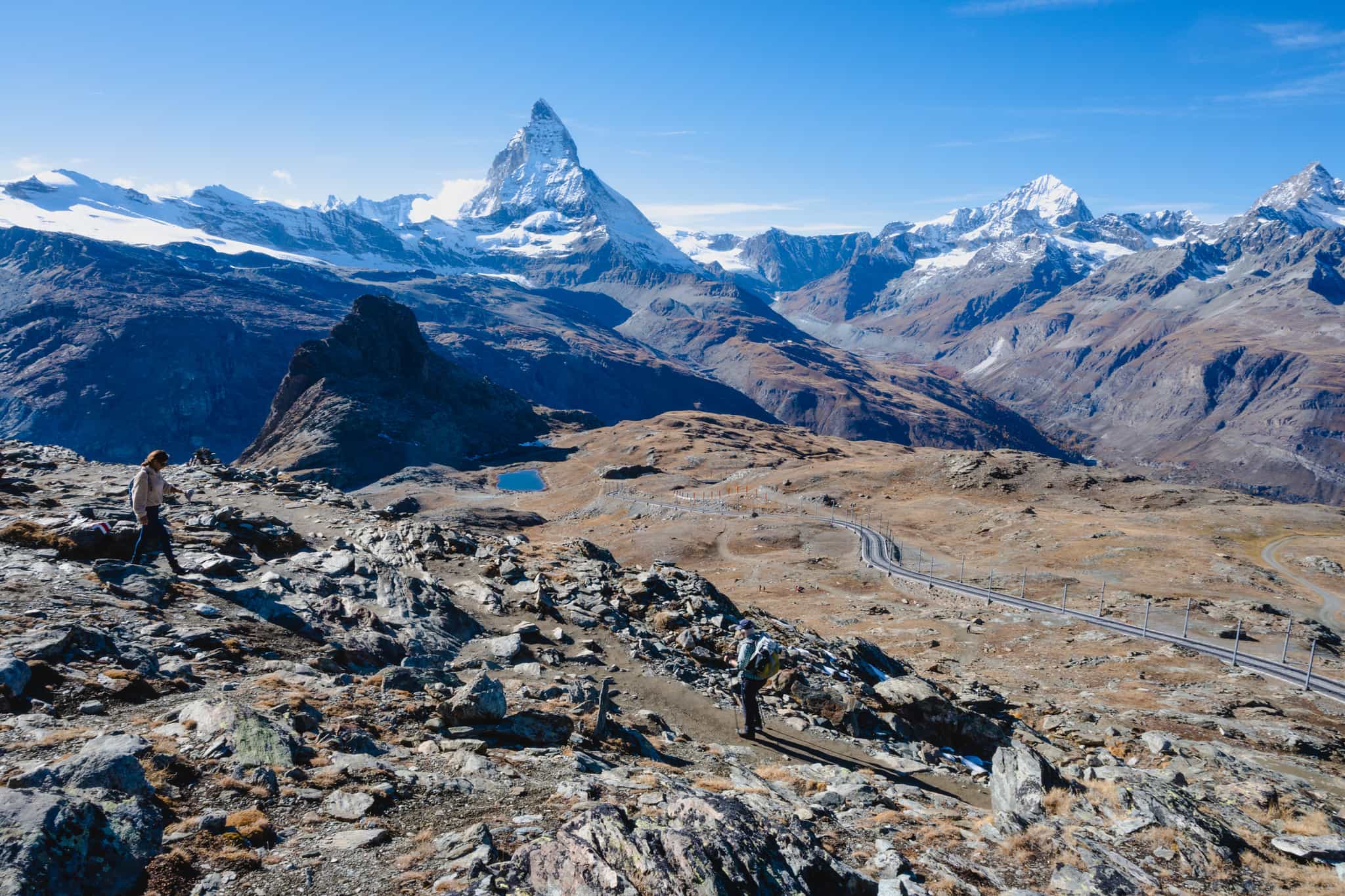
Hiking
Kick off with a quick downhill stretch towards Alpe Varda and Alpe Mase - a true highlight of the journey. Up ahead, the massive Breithorn glacier dominates the skyline as you ascend towards the Cima Biancha pass at 2982m, offering views of the vibrant waters of Gran Lago. Prepare to feast your eyes on the Matterhorn, perhaps the world's most recognisable peak. Follow the trail beneath the western slopes of the Kleine Matterhorn before embarking on a steep, demanding climb over glacial terrain to the TMR's highest point, the Colle del Teodulo at 3317m. You'll finally arrive at the high-altitude Teodulo refuge, perched precariously on a rocky outcrop amidst glaciers. Rest up for the big culmination tomorrow.
Day 7
Monte Rosa glacier to Zermatt
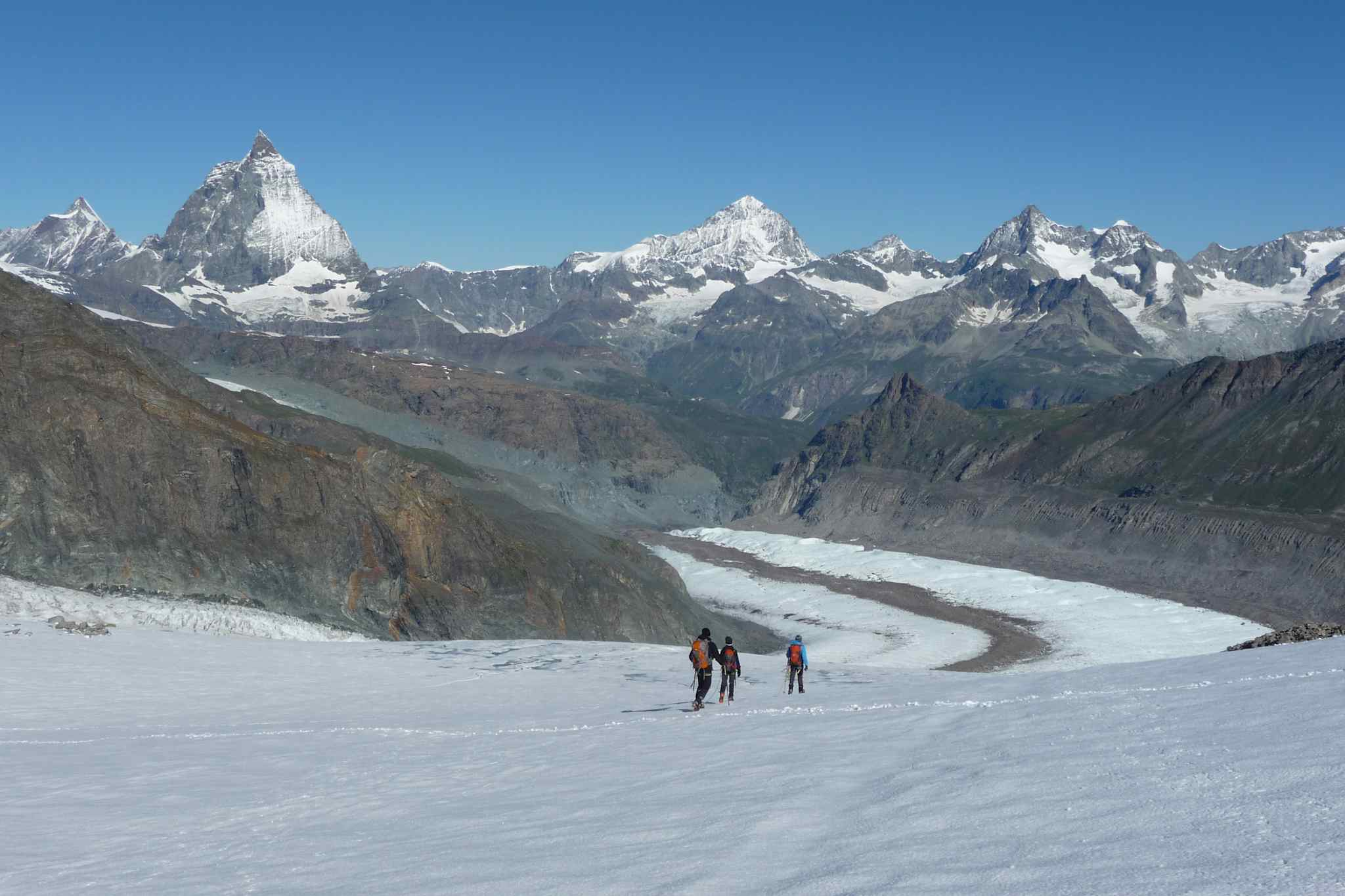
Hiking
The trek reaches a crescendo on the final day as you tackle the glacier crossing necessary to reach the finish line in Zermatt. An additional IFMGA certified guide will skilfully lead the group onto the Theodul glacier, keeping you safe by roping you and your fellow adventurers together in groups of four. You won't need any specialised gear; regular hiking boots and trekking poles will suffice. The views are nothing short of spectacular, with perfect vistas of the Matterhorn, Alphubel, Dom, Obergabelhorn and Weisshorn. Upon reaching the far side of the glacier at Gandegg, you'll bid adieu to the ice and continue on, meandering through glacial moraine as you make your way downhill towards Zermatt. The trip ends here, although the famous Alpine resort is the perfect place to extend your stay or toast your efforts with a celebratory beer. Alternatively, if you have a late flight booked, you can head to the station to grab the four-hour train ride to Geneva Airport.
The Area
Logistics
Starts
Visp Train Station, Switzerland
17:00 on Day 1
Ends
Zermatt
16:00 on Day 7
Transfers
On arrival at Geneva Airport, you'll need to make your own way to Visp train station to meet your guide and transfer up to your first night's accommodation in Saas Grund. Visp train station is a 2hr 15m train ride from Geneva on Swiss Railways's IR90 route. A one-way ticket will cost you between £55/€64 and £110/€127 depending on which class you book. Rail Europe is a good option for advance ticket purchases, though you can book your ticket on arrival at Geneva Airport's train station.
Your guide will meet you at Visp train station at 17:00 to escort the group together to the accommodation in Saas Grund on the local bus service. If you want to join the group outside of this arrival time, this is fine - you'll just need to make your own way to Saas Grund using the line 511 bus service which you can take from directly outside Visp train station. Tickets for this bus cost £5/€6.50.
The trip finishes up in Zermatt which is a 4hr train ride away from Geneva. You can take the RE42 line to Visp, change here for the IR90 line to Geneva Airport. The ticket will cost £59/€68 and £139/€160 depending on which class you book. You won't be back in Zermatt until approximately 16:00 on Day 7, so unless you have a very late flight that evening you'll need to stay the night in Zermatt after the trek finishes and travel back the following day.
Travel options
Air travellers can fly into Geneva Airport (GVA) which is approximately two hours from Visp by train. There are many flight options from all over Europe into Geneva Airport, while North American travellers can take direct flights from the East Coast out of New York, Washington and Montreal.
For European travellers who wish to avoid flying, Geneva is easily accessible by train via various routes. UK travellers can travel between London and Geneva in as little as 6 hours, taking the Eurostar from London to Paris and then connecting to the TGV-Lyria high-speed train from Paris to Geneva. From Geneva you can take the onward train to Visp on the IR90 line.
Day 1
Breakfast
Lunch
Dinner
Day 2 – Day 6
Breakfast
Lunch
Dinner
Day 7
Breakfast
Lunch
Dinner
What is the food like?
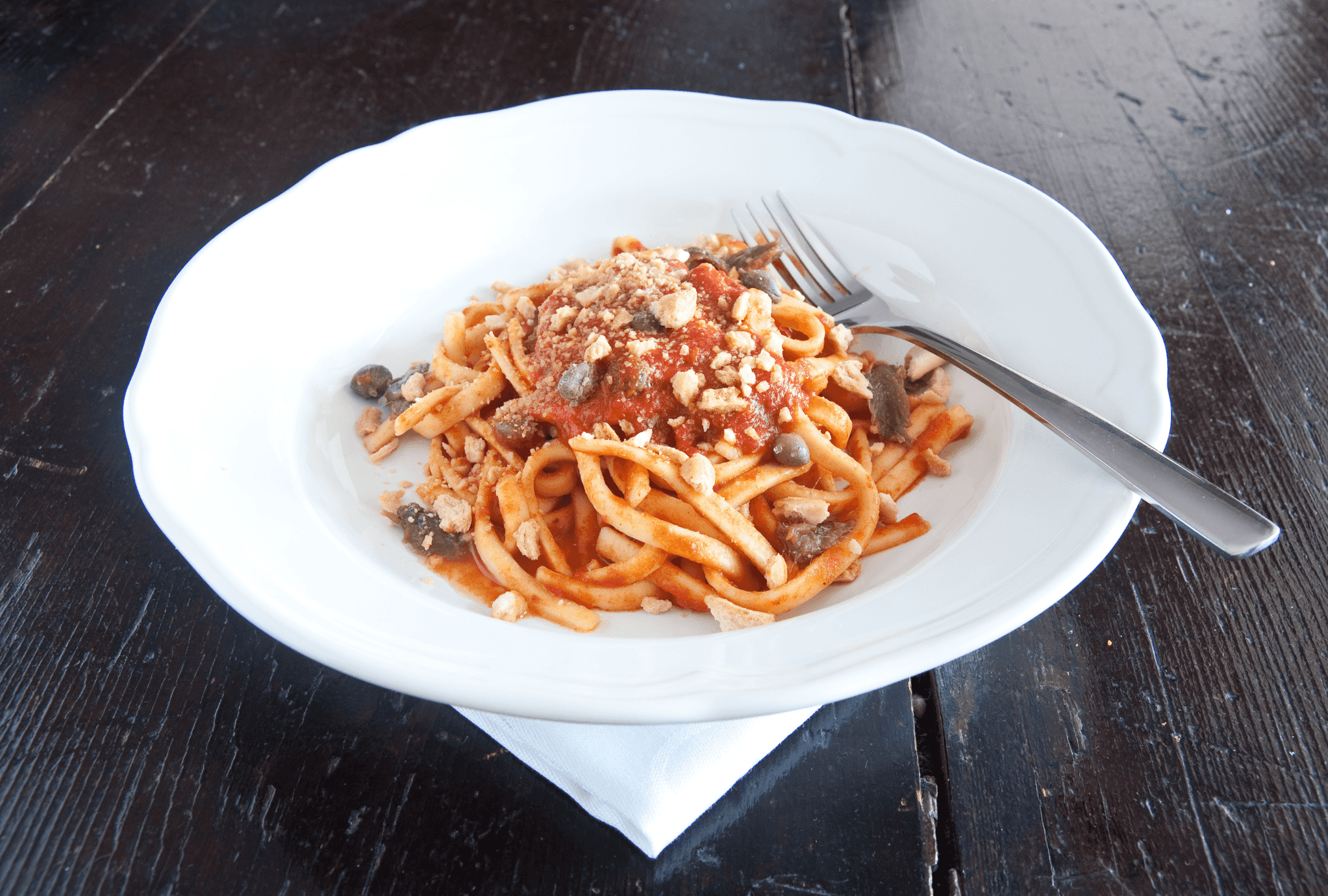
Breakfasts in the mountain huts are usually continental - think juices, teas, coffee, yoghurts, bread and jams. Dinners are varied and hearty - expect soups, a main course with meat, vegetables and a side dish (rice, polenta, pasta), cheeseboards and charcuteries, plus desserts like vanilla pudding, crème brulée and fruit salads. As the refuges that you'll stay in are on the Italian side of the Alps, pasta dishes are plentiful - you'll see why the Tour del Monte Rosa is nicknamed 'The Spaghetti Tour of Monte Rosa'. Your host will also provide healthy packed lunches. They’re big and include sandwiches, wraps or a salad, as well as a selection of fresh fruits, muesli bars, chocolate and nuts (to name a few).
Vegetarians, vegans and other dietary requirements and allergies can be catered for - please just request on your passenger info form.
What is the accommodation like?
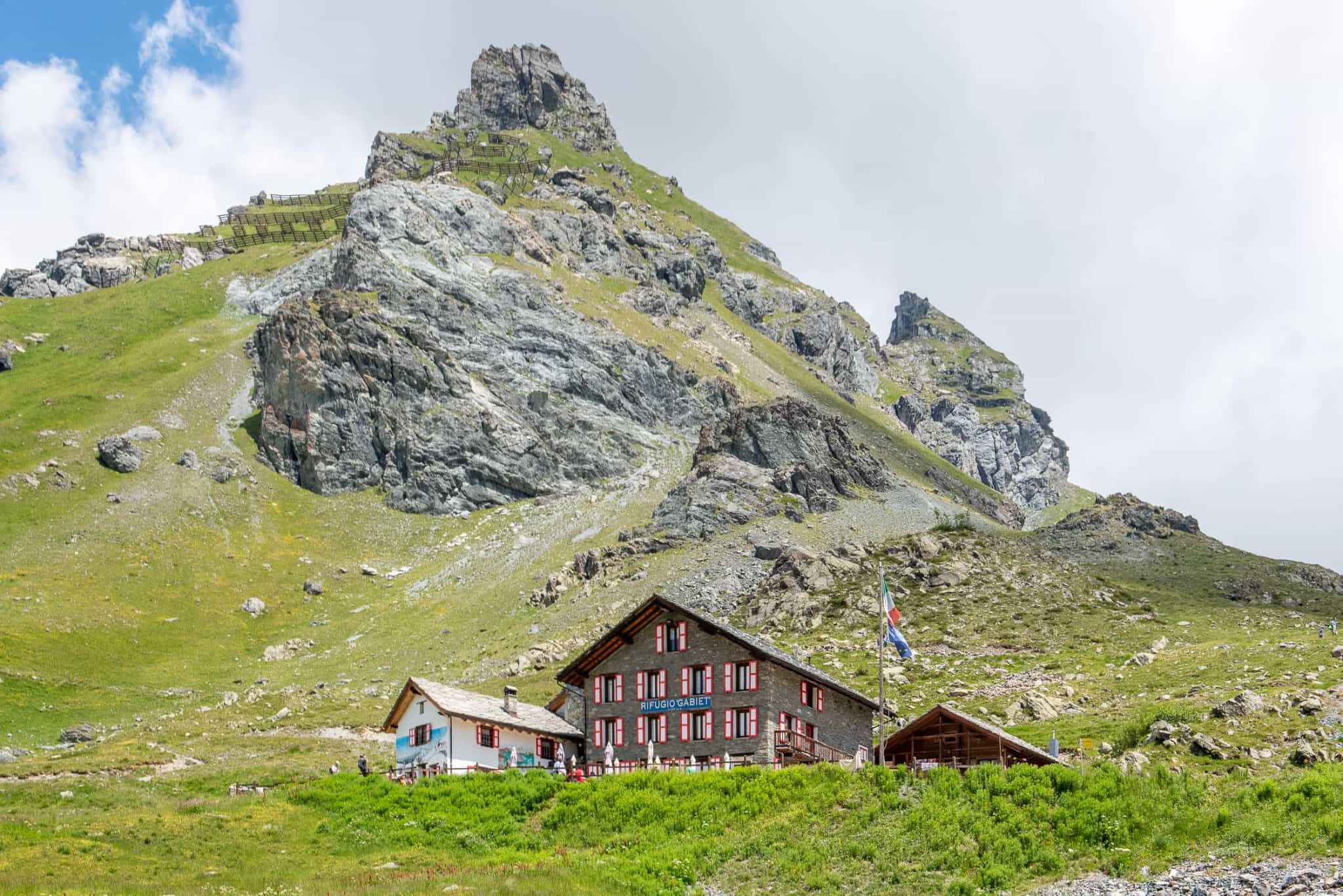
Refuges and Pensions on the route
As you traverse the Monte Rosa massif you'll bunk down in village pensions and mountain refuges at various points along the route. Each refuge is unique but you can usually expect hot showers and running water (often in a shared bathroom with a time limit), bunk beds with a pillow and blankets and a bar with cold drinks. Refuges in the Alps are basic but friendly and provide an excellent opportunity to get away from civilisation and reconnect with nature. The remote mountain refuges on the route include Rifugio Pastore, Rifugio Gabiet and the Teodulo Refuge, which is surrounded by glaciers. The mountain villages you'll overnight in will be Saas Grund, Macugnaga and Resy - where you'll stay in a refuge or pension. The exact one will differ depending on availability.
You will stay in mixed-sex dormitories throughout the trip. Blankets and bedding are provided, but we advise that you bring a sleeping bag liner for extra comfort. Earplugs are also recommended!
Upgrades
Due to the nature of the mountain refuges used on the Tour del Monte Rosa, it is not possible to have a private room at any stage of this trip.
This trip has been rated as Tough
This trek is a serious challenge. You'll certainly earn your sundowner at each of the mountain refuges! You're covering over 100km in six days of trekking, with 6700m of elevation gain and descent to tackle on the route. Most of the route is on trail with some sections of loose, rocky, limestone scree to navigate. This trek has an added consideration of a glacier crossing on Day 7. An additional guide will join the group on this day to help with the crossing - full safety guidance is provided to safely hike across this vast expanse of ice. A strong level of fitness and resilience and the ability to keep your spirits up on long days of hiking is key for this trip. Remember, you will also be carrying a 40-50 litre backpack throughout the trek, although as it is a hut-to-hut route, you won't be carrying any camping or cooking equipment – just your clothes, personal belongings and enough water for the day ahead.
The glacier crossing is manageable by any trekker who has made it this far to Day 7. You don't need any technical experience or knowledge, and the glacier can even be crossed without needing crampons or spikes. You'll be roped up in groups of four by your guide.
What will I need to carry?
This is a hut-to-hut trek deep in the mountains, no luggage transfers or porterage options are available. That said, you won't need to carry any camping gear or sleeping bag as you are staying in refuges along the route which provide bedding. We strongly suggest you train for a trip of this nature by heading out in the weeks before with a good quality 40-50L trekking backpack loaded up so that you get used to the weight.
The Tour del Monte Rosa trekking season is from June to September. Expect warm days with temperatures ranging from 15°C to 25°C (59°F to 77°F) at the lower elevations. Things are a little cooler at higher elevations, especially in the early morning and late evening. Occasional rain showers or thunderstorms can occur, especially in the afternoon – the likelihood of these are stronger in August. Snow and ice are typically not a concern on the main trails during the mid/late summer season, but you might encounter some residual snow patches at high altitudes.
Great views and food. A fun 6 day trek
A well organised 6 day trek round the Monte Rosa massif. Refuges were all nice with great food and even better views. An evening beer with a different Mountain View every day is an essential part of the experience! A good level of fitness and packing carefully to keep your backpack light is a definite bonus for the enjoyment factor. Would definitely recommend to anyone looking for a fun hiking adventure. Afternoon naps in the sunshine were a highlight 🙂
Excellent and well organised trek
This was a very enjoyable few days, Speranza was an excellent guide who was extremely well organised and provided clear planning throughout. The accommodation and food were generally of a very high standard but expect a similar menu each day. Carrying all your gear meant the days were all relatively tough but manageable. Expect you will be going either up or down, there was very little walking on the flat. The paths were never crowded and the scenery was pretty much always stunning.
Itinerary Activities
Six days of guided hiking on the Tour del Monte Rosa:
- Saas Grund to Macugnaga
- Macugnaga to Alagna Valsesia
- Alagna Valsesia to Gressoney Valley
- Gressoney to the Ayas Valley
- Ayas Valley to the Monte Rosa glacier
- Monte Rosa glacier to Zermatt, including a roped traverse of the Theodul glacier
Guides
- Expert, local, English-speaking mountain guide
- Plus an extra IFMGA-certified guide for the roped glacier crossing
Accommodation
- 6 nights in village pensions and mountain refuges
Meals
All your meals are provided for the duration of the trip. This includes:
- 6 continental breakfasts
- 6 healthy packed lunches
- 6 hearty hot dinners
Equipment
- Safety gear for crossing the Monte Rosa glacier
- Pillows and blankets are provided in the refuges
Our trips are hassle-free by design. We include all the activities and equipment, as well as many of the meals, so you can simply rock up with your rucksack and share the adventure with your new pals.
Travel to and from the trip
Our trips do not include flights, trains or other travel to the start point and back from the end point.
Airport transfers
This trip begins in Visp and ends in the car-free town of Zermatt, so you'll need to make your own way there from the airport – see the 'Getting There' section for more information.
Tips
Tips are not included in the trip cost; these are entirely at your discretion. If you would like to tip, the amount should be reflective of your perception of service and quality.
Personal Expenses
You know your own spending habits best, so please budget an appropriate amount for things like optional meals and drinks, shopping, optional activities, and laundry.
Travel insurance
Travel insurance is compulsory for all of our adventures and you are required to provide your policy information before departing. Your insurance should include adequate protection for overseas medical treatment, evacuation/repatriation, your baggage and equipment and the specific activities involved on your adventure. We also strongly recommend it includes cancellation and curtailment insurance, should you be unable to join your trip for specific reasons such as illness. Our recommended travel insurance provider is Campbell Irvine, as their insurance offers all of the above.
Visas
Visa requirements often change, and you are responsible for obtaining any required visas for this trip. Please check with your nearest embassy or consulate for up-to-date advice.
What's included?
- An additional guide will join the group for the glacier crossing on Day 7 and provide the extra safety equipment required for the conditions, including a rope. Flexible crampons (the micro-spikes style) are typically not required but would be provided if necessary.
What do I need to bring?
BAGS
- Hiking pack (40-50 litres)
- Waterproof liner for hiking pack and rain cover
CLOTHES
- Lightweight down or synthetic jacket
- Lightweight waterproof and windproof jacket and trousers
- Warm hat and gloves
- Breathable wicking layers (merino wool or synthetic)
- Fleece mid-layer jacket or similar
- Buff or neck scarf
- Lightweight trousers/shorts/skirts for hiking
- T-shirts (merino wool or synthetic, not cotton)
- Underwear and hiking socks
- Swimwear for hotel
- Sunglasses
- Sunhat
- Something to sleep in
- Hiking boots (worn-in, with good grip and ankle support)
- Lightweight shoes for refuges (optional, most huts offer crocs to use)
SLEEPING
- Pillowcase
- Sleeping bag liner (blankets and pillows provided)
- Earplugs and Eye mask (highly recommended for mountain huts)
OTHER
- Universal travel plug adapter (Swiss and EU standards)
- Power bank or solar charger
- Passports (and visas)
- Travel Insurance
- Suncream (SPF 50 recommended due to altitude)
- Personal first-aid kit (inc. blister treatment)
- Personal items (biodegradable toiletries, sanitary wear etc)
- Quick-dry travel towel
- Hand sanitiser gel
- Headlamp or torch
- Two reusable water bottles and/or bladders with combined carrying capacity of 2 litres
- Hydration salts/Electrolytes
- Trekking Poles (lots of up and down on this trek!)
- Cash (CHF/EUR) for drinks, snacks along the trail, tips etc.
OPTIONAL
- Energy bars and snacks - read our article on Best Hiking Snacks
No optional extras are available for this trip.
We partner with the World Land Trust to ensure this trip achieves Net-Zero emissions. We also support their Buy an Acre programme, helping local communities to buy and protect natural habitats in perpetuity.
What's the number?
It works out on average at 135kg of CO2 emissions per person, including all local transport, accommodation, food, activities, guides, staff and office operations.
The only thing it doesn’t include right now is flights and travel to the destination. We do make an overall estimate across all our customers separately, but as we don’t book flights, have customers from all corners of the world, and no way of reliably knowing their travel plans, we simply can’t include an individual number in the figure on display here. We’ve got a goal to fix that, so that when you book, there is a way to measure and mitigate the carbon emitted by your flight too.
But what does the number mean?
Yep, hard to picture eh? To give you an idea:
- Driving 1000 miles/1609km would be approximately 281kg of CO2 in an average car (or 140.5kg per person, if there were two of you in it).
- A return economy class flight between London and New York would be approximately 1619kg (1.66 tonnes) per person.
- 10 trees in a temperate forest are estimated to remove approximately 250kg of CO2 from the air in a period of 5-10 years.
What are we doing about it?
Our trips are relatively low-carbon by design, and we're working with all our hosts to develop long term carbon reduction plans. We partner with the World Land Trust to ensure this trip achieves Net-Zero emissions. We also support their Buy an Acre programme, helping local communities to buy and protect natural habitats in perpetuity, ensuring the protection of the reserve and its wildlife.
Want to know more?
Amazingly, no international travel company has ever publicly published their carbon measurements before, as far as we know. We believe that must change, quickly. So we’re openly sharing the method we used in the hope that other companies will be able to more easily follow suit and build on what we've done so far. You'll find it all here.
The Tour del Monte Rosa's reputation for being challenging is well-earned due to its steep ascents, high-altitude mountain passes, mandatory glacier crossings and rugged terrain. The more challenging nature of the trek serves to keep numbers of hikers on the trail relatively low compared to other parts of the Alps.
What additionally sets this trail apart from other renowned hikes, such as the Tour du Mont Blanc and Walker's Haute Route, is the necessity to cross a glacier. Specifically, the Theodul glacier which requires a specialist guide and ropes to traverse safely.
You'll have one trekking guide for the full trek and an additional specialist glacier guide per every four people on the Monte Rosa glacier crossing.
Tips are not included in the trip cost. These are entirely at your discretion and are non-compulsory on this trip. Of course, if you feel that your guides provided an exceptional experience then you are welcome to tip as much as you feel is appropriate.
The tap water from the refuges in the Alps is safe to drink, so bring along a minimum of two litres carrying capacity in water bottles and/or bladders to fill up each morning before setting off. There will be opportunities to fill up from streams and rivers on the trip, though we advise you to exercise caution and bring some form of filtration if you wish to fill up from natural water sources. Have a read of our guide to the best water filters for adventurers.
As this trip starts in Saas Grund and finishes in Zermatt, it is not possible to leave your excess luggage at the start point of the trip. There are luggage storage facilities at Geneva Airport which you can use if you are flying in and out of Geneva Airport either side of the trek.
Snow is the biggest factor which can affect this trek, particularly in the earlier part of the season. If there has been any significant snowfall on the days prior, your host has plotted out deviations away from these sections in case of snowfall. If poor weather comes in (such as storms, heavy rain and poor visibility), depending on the stage of the trek your host will consider the conditions and plot an alternative route which may involve sitting out any extreme weather in one of the huts. This is an unlikely event in the summer months, but your hosts are experienced mountain guides with a lot of successful treks in this part of the world under their belt, so you are in the best of hands.
This trip visits locations at or above 2500m, where some people may experience symptoms of Altitude Sickness, also known as Acute Mountain Sickness (AMS).
Previous experience at altitude doesn’t guarantee the same response again – your body can react differently on each trip. However, having been at altitude before is still valuable: it gives you a better understanding of how your body might respond, what symptoms to look out for, and how to manage your pace and energy levels.
Your guide is trained to manage the risk of altitude sickness by controlling the rate of ascent, monitoring group wellbeing, and responding appropriately if anyone feels unwell.
Before booking, we recommend considering your personal health, particularly if you have any pre-existing conditions, and consulting a medical professional if you’re unsure. Arriving early to allow your body to acclimatise can also make a big difference.
Your travel insurance must cover the maximum altitude reached on this trip and include emergency evacuation.
Sure can! Over 70% of our travellers travel solo, it’s a great way to meet like-minded people.
Our team of Adventure Hunters co-create exclusive adventures which are run by highly vetted, specialist hosts. The trip is run by our trusted host partner in the destination. We only work with independent, local, in-destination experts who know the very best places to explore and how to stay safe. Read more information about the local teams we partner with. You’ll be introduced to the host straight after making a booking via the Much Better Adventures platform.
Much Better Adventures refer to the UK Government’s official travel advice when designing trips and monitoring trip operations. We recommend that all customers are familiar with the practical information provided on the Government’s FCDO website, where current travel advice can be found by searching for the applicable destination(s).
For customers joining this trip from other international destinations – please also read the official travel advice applicable to your country of residence/origin, as this may differ.
We recommend checking out the country-specific information and also talking to a travel nurse.
We automatically convert prices from the local currency that a host receives to your chosen currency. We update our exchange rates on a daily basis so this does mean that prices displayed on the site are subject to currency fluctuations, which is why you may see them change over time.
If you wish to change the currency you pay in, head to the bottom of the page.
All of our group adventures are specially designed for adults to enjoy as we want these adventures to bring together outdoorsy people who are truly like-minded. You must be over 18 to join one of our trips.
You're always in good company on one of our adventures.
Our trips are typically made up of a mixture of solo travellers and small groups of 2 or 3 friends, with most in their 30s-50s.
Our sociable adventures are solo-friendly by design and naturally attract outdoorsy people with a shared mindset; a love for adventure, a desire to push themselves and meet awesome, like-minded people along the way.
It’s this camaraderie that has so often turned a great adventure into a life-changing one.
Don't just take our word for it:
- 95% of people rate the group dynamics on our trips 5/5
- 90% of people recommend joining a trip to make new friends
- 75% of people have met people on our trips that they would now consider friends
See here for more info about the Much Better Adventures tribe.
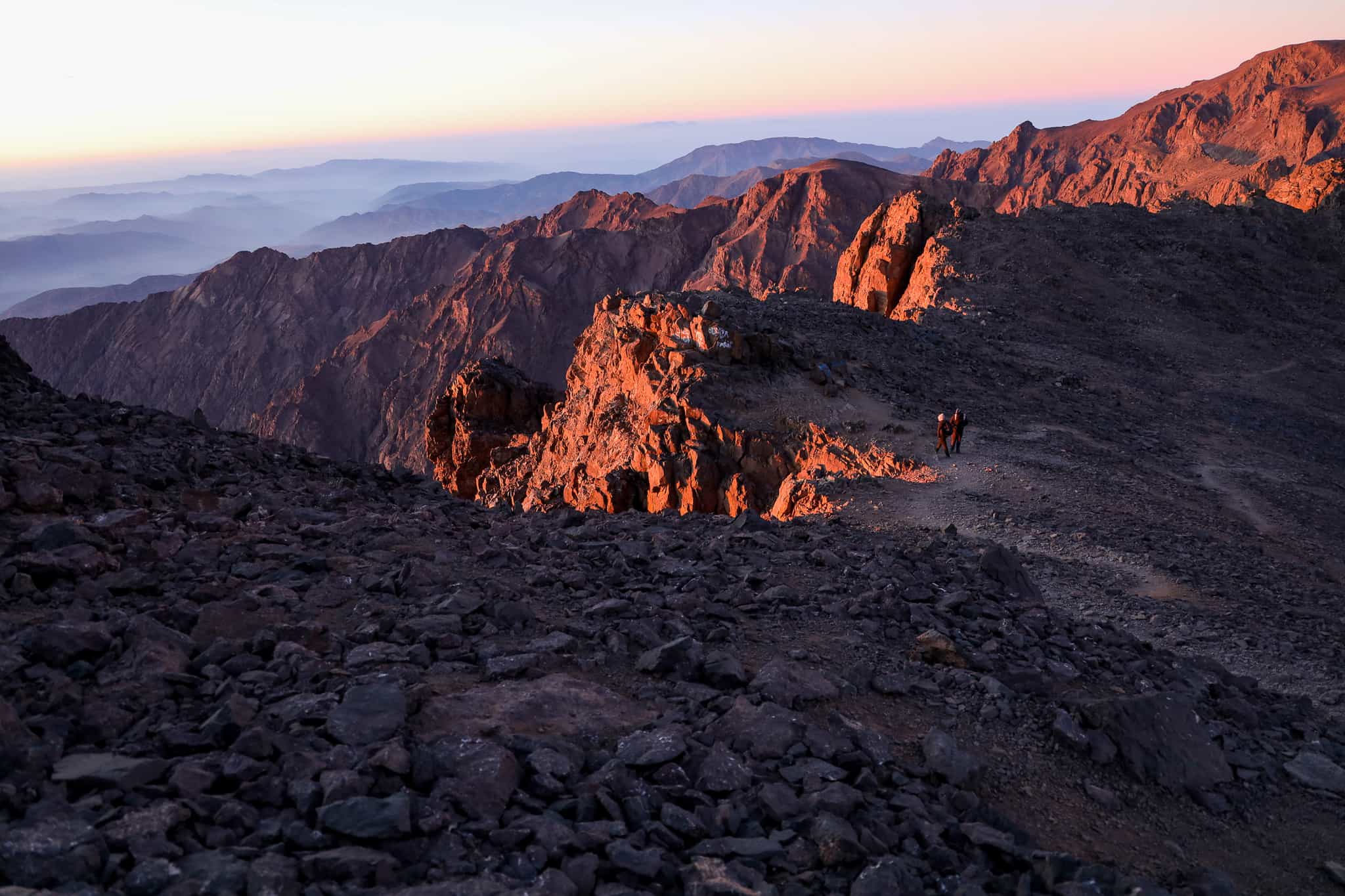
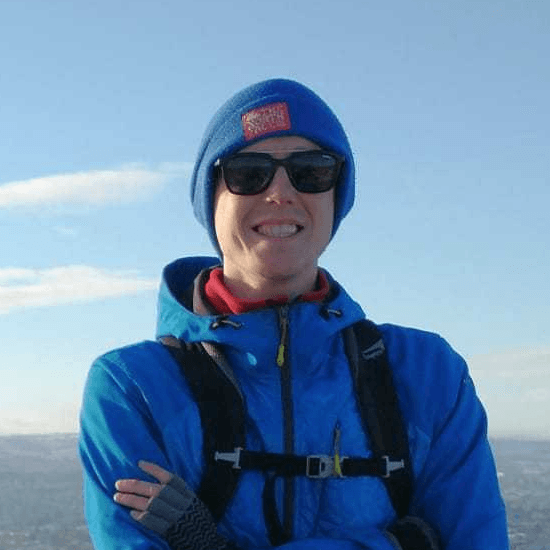
Need help finding flights?
From logistics and how to get there, to fitness, group dynamic and trip difficulty, Rory and his team of friendly experts are on hand to help.
We've got your back
Guaranteed to run
All Much Better Adventures trips are now guaranteed to run. Once you’ve booked your spot you can immediately make your travel arrangements, no uncertainty, no hanging about (excludes 'request to book' departures). Full details
Flexible payments
Secure your spot with the minimum deposit and pay off the remaining balance in as many instalments as you like, with no interest or fees. Full details
Happiness Guarantee
We’re so confident you’ll have an amazing time we’ll put our money on it. Full details
Full financial protection
To give you complete peace of mind Much Better Adventures is backed by ABTOT, ABTA and ATOL memberships. Full details
Tried & Trusted
Much Better Adventures is rated ‘Excellent’ on Trustpilot with over 1000 verified trip reviews averaging 4.8/5.
Connect before you go
You'll be invited to join a WhatsApp group to get to know each other before your big adventure together. Full details
DEPARTURE DATES
Sunday 13th July 2025
to Saturday 19th July 2025
Last Minute Offer - Next 2 spots available at 10% off
